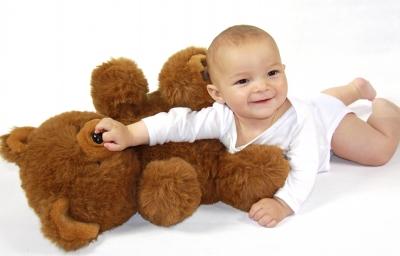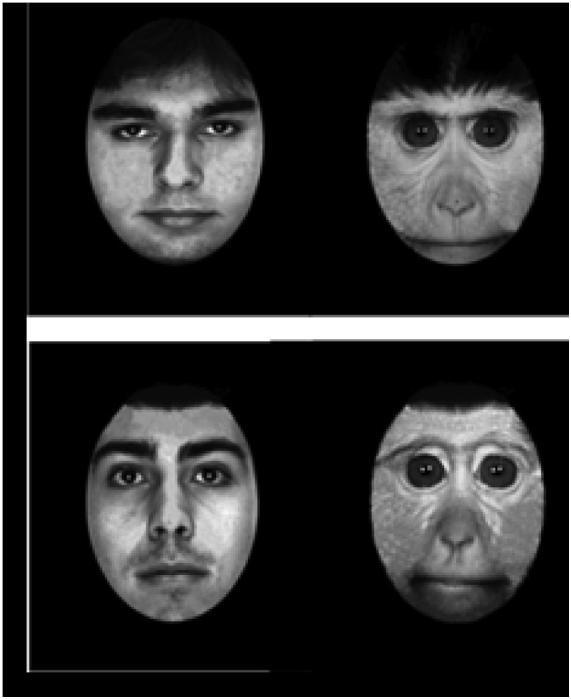
Babies stare at faces with brow-wrinkling focus and concentration. A newborn baby loves human faces and parents instinctively bring their faces closer so that she can inspect the face. Babies seem to be wired to search for clues about the world by staring at faces. Newborns’ vision is blurred and a baby cannot discriminate finely.
A baby is broadly tuned to faces and if something looks like a face, she will keep staring. So what sort of faces does a baby look at? Do they prefer human faces? It is easy to quickly say, of course, they look more at human faces. . . But it seems like babies do not prefer human faces. They are fascinated by other primate faces. And nonhuman primates do look at bit like humans.

A six months old baby is as good at telling apart monkey as she is at telling apart human. If you look at monkeys, well, chances are that you think it is difficult to tell them apart. But you have no problem telling human faces apart. To a baby, a monkey’s face and faces of humans have the same richness of distinctive features. But babies loose this skill. By nine months, they are better at telling humans apart than monkey – they are more like adults.
Perceptual narrowing means perception is broad from birth, but narrows as a function of experience. From birth, the baby’s perceptions of the world gradually changes and after a while they are only able to see what they already see. A baby can see differences between both human and non-human faces but this ability is lost since in most cases babies have experience with human faces. At birth a baby, the phonemes of different languages sounds distinct to a baby. But through perceptual narrowing, an 8-10 months-old baby is only able to hear the phonemes in her native language/s.
So if you visit monkeys several times during your baby’s first months she will be better to distinguish between humans and non-human faces. And yes, monkey babies used to human faces, can distinguish between human faces.
Go here to read more about newborn and vision.
Reserach Di Giorgio, E., Leo, I., Pascalis, O., & Simion, F. (2011, December 5). Is the Face-Perception System Human-Specific at Birth?. Developmental Psychology. Advance online publication. doi: 10.1037/a0026521
Photo: “Baby With Teddy Bear” by Lisa McDonald
